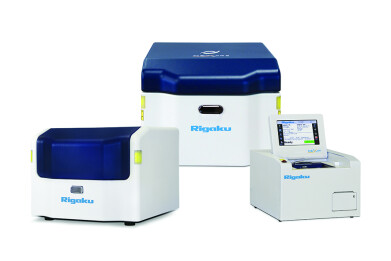Environmental Laboratory
The advantages of using EDXRF for monitoring environmental contaminants
Jul 17 2024
EDXRF (energy dispersive X-ray fluorescence) addresses many analytical needs. It is a commonly used type of XRF because it offers a fast, reliable, and economical solution for determining elemental composition in almost any sample type.
Whether monitoring toxic heavy metals in aerosols on air filters, checking industrial waste streams, or testing soils — elemental analysis by EDXRF is an excellent choice for monitoring environmental contaminants. It is used for many screening needs and is critical for assessing potential risks posed by pollutants and toxic materials. Rigaku's EDXRF benchtops offer non-destructive analysis of sodium to uranium, giving you versatility and flexibility. They provide quick, qualitative and quantitative elemental analysis in a wide range of matrices, from low ppm to high weight percent concentrations. Additionally, Rigaku EDXRF options meet various budget levels and occupy only a small amount of space in labs or testing facilities. Rigaku EDXRF benchtops include the NEX CG II Series for trace-level sensitivity for complex applications and research, the NEX DE Series for high-performance and small-spot analysis applications, and the NEX QC Series for routine checks and in-field use. These analysers are easy to use, require minimal to no sample prep, and offer a low cost of ownership. The software is intuitive, with simple menu navigation, and various autosampler options are available for high-throughput measurements.
Rigaku’s NEX CG II Series excels in complex applications with trace elements and variable-base matrices. The NEX CG II Series are highly versatile analysers ideal for measuring ultra-low and trace element concentrations up to percent levels. They are well-suited for trace element analysis for environmental monitoring applications, such as monitoring industrial waste streams to the sub-ppm levels, testing soils, and many others. NEX CG II Series analysers excel in complex applications with trace elements and variable base matrices without needing a large set of calibration standards.
The NEX DE Series provides high-performance results when analysis time or sample throughput is critical. These analysers are high-performance benchtops that provide a fast, simple, yet powerful means of monitoring chemicals, toxins, and heavy metals. These systems offer exceptionally low limits of detection and provide excellent spectral resolution, resulting in low single-digit ppm-level trace elements such as arsenic, cadmium, and lead.
The NEX QC Series analysers combine superior performance capabilities with affordability. These instruments are lightweight and compact and do not require an external PC. The intuitive touchscreen interface, built-in printer, and optional portable roller case make them easy to use and convenient for almost any setting — in the field, plant, or lab. They are ideal for routine measurements and basic QC.
Digital Edition
AET 28.2 April/May 2024
May 2024
Business News - Teledyne Marine expands with the acquisition of Valeport - Signal partners with gas analysis experts in Korea Air Monitoring - Continuous Fine Particulate Emission Monitor...
View all digital editions
Events
Jul 21 2024 Cape Town, South Africa
Australasian Waste & Recycling Expo
Jul 24 2024 Sydney, Australia
Jul 30 2024 Jakarta, Indonesia
China Energy Summit & Exhibition
Jul 31 2024 Beijing, China
2024 Beijing International Coal & Mining Exhibition
Aug 07 2024 Beijing, China


















